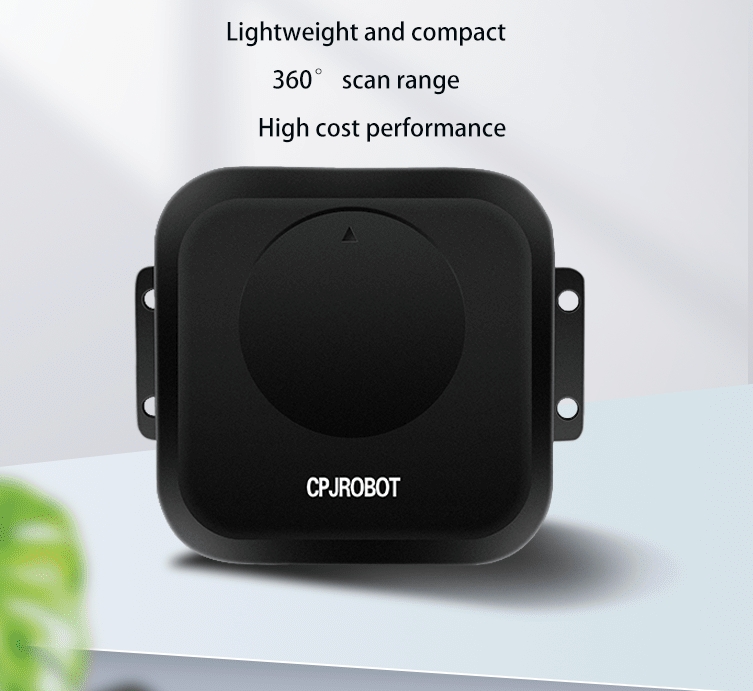LiDAR, which stands for Light Detection and Ranging, is a technology that utilizes laser signals to measure the distance and position of objects. Initially defined as LIDAR, it was later accurately termed LADAR (Laser Detection and Ranging) in 2004. Operating in optical wavelengths, LiDAR offers numerous advantages, including high resolution, strong anti-interference capabilities, rich information retrieval, and the ability to function around the clock. This article delves into the significant role of single-line LiDAR in autonomous driving.

Key Advantages of Single-Line LiDAR
- High Resolution: Single-line LiDAR operates at optical wavelengths, providing high distance, angle, and speed resolution.
- Strong Anti-Interference: Its short wavelength allows for a narrow laser beam, minimizing multipath effects and enabling low-altitude or ultra-low-altitude target detection.
- Rich Information Retrieval: It captures multidimensional images by directly obtaining target distance, angle, reflectivity, and speed information.
- All-Weather Operation: Being an active detection technology, LiDAR doesn’t rely on external lighting or the target’s radiation characteristics. It simply emits its laser beam and analyzes the echo to gather target information.
Despite these advantages, LiDAR faces challenges with atmospheric conditions and environmental dust, making all-weather operation difficult.
Recent Research and Developments
Recent advancements in LiDAR technology have focused on improving performance and reducing costs. For example, innovations in MEMS (Micro-Electro-Mechanical Systems) mirrors and solid-state LiDAR are enhancing the reliability and reducing the size of LiDAR systems. Research is also exploring ways to mitigate the effects of weather conditions on LiDAR performance, aiming for better accuracy and reliability in various environments.
Applications of Single-Line LiDAR in Autonomous Driving
While multi-line LiDAR is often highlighted in autonomous driving, single-line LiDAR still holds significant value. Here are some of its primary applications:
- Pedestrian Detection: Single-line LiDAR offers high angular resolution, making it ideal for detecting small objects and pedestrians. This capability allows autonomous systems to identify potential hazards earlier, providing more time for reaction and enhancing safety.
- Obstacle Detection: The high repetition rate and angular resolution of single-line LiDAR make it suitable for detecting small and distant obstacles, a crucial function for ensuring safe navigation in complex environments.
- Lane Detection: Single-line LiDAR can be used for lane detection, offering advantages over cameras. Infrared lasers are less affected by background light, allowing LiDAR to filter out strong background light and capture high-quality lane images. This capability is essential for maintaining accurate lane positioning, especially in challenging lighting conditions.
- Collision Avoidance: The ability to detect obstacles and pedestrians at a distance makes single-line LiDAR an effective tool for forward collision avoidance systems. Its precise measurements enable timely alerts and interventions to prevent collisions.

Summary
Single-line LiDAR is a powerful and versatile tool in the field of autonomous driving, offering high precision, reliability, and cost-effectiveness. Its ability to detect small objects, pedestrians, and obstacles with high accuracy makes it an essential component for enhancing the safety and functionality of autonomous vehicles. As technology continues to advance, single-line LiDAR will play a crucial role in the development of autonomous driving systems.
FAQ
Q: How does single-line LiDAR compare to multi-line LiDAR in autonomous driving?
A: Single-line LiDAR offers higher angular resolution, making it better suited for detecting small objects and pedestrians. While multi-line LiDAR provides a broader field of view, single-line LiDAR excels in applications requiring detailed detection.
Q: What are the limitations of single-line LiDAR?
A: Single-line LiDAR can be affected by atmospheric conditions and environmental dust, which can impact its performance. However, ongoing research is addressing these challenges to improve reliability.
Q: Why is single-line LiDAR preferred for lane detection over cameras?
A: Single-line LiDAR uses infrared lasers, which are less impacted by background light. This allows it to filter out strong background light and capture high-quality lane images, offering more reliable lane detection compared to cameras.
Call to Action
CPJ Robot specializes in developing LiDAR and autonomous navigation robots. We offer customized solutions tailored to your needs. For more information, visit our website and contact us today!







